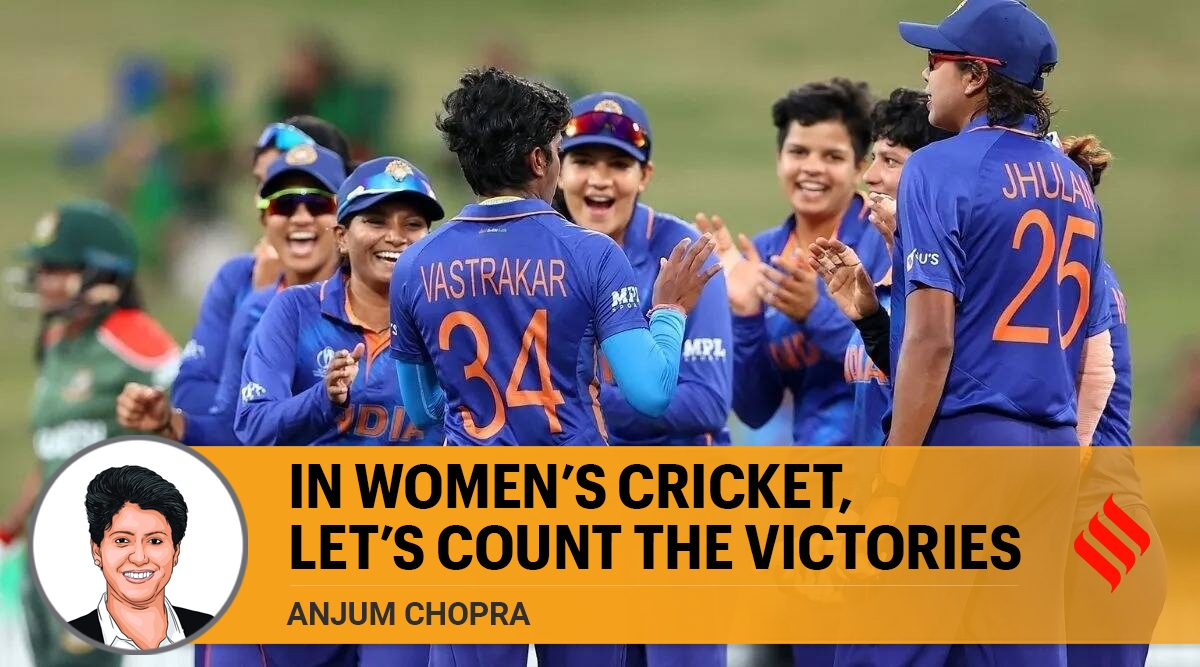 Anjum Chopra writes: Playing a tournament like Women’s IPL will propel the chances a lot more, and it’s just one of the steps towards developing the women’s game at the highest level. (Image source: Twitter @BCCIWomen)
Anjum Chopra writes: Playing a tournament like Women’s IPL will propel the chances a lot more, and it’s just one of the steps towards developing the women’s game at the highest level. (Image source: Twitter @BCCIWomen)I have always maintained that the landscape of women’s cricket is not going to change with the women’s Indian Premier League (IPL). However, the landscape will change with continuous improvement for women’s cricket in India. All-round improvement and consistent and positive results will definitely help change the landscape.
Playing a tournament like Women’s IPL will propel the chances a lot more, and it’s just one of the steps towards developing the women’s game at the highest level. If you add another international tournament that allows international players to come into our country and exchange ideas with the Indian domestic and international players, they will learn quickly from each other. And because they are all playing in a competitive environment, you will know a lot about the game. You learn to absorb the pressure and know how to perform under pressure, and there are various other things to grasp. All this will go into the development of women’s cricket.
But if one suggests that Women’s IPL will change the course of women’s cricket, then no, it won’t. Women’s IPL will not be the deciding factor. If the team consistently does well at the world level, things will automatically improve.
We won’t get sudden results with the Women’s IPL. In men’s cricket, we are No. 2 in the Tests; we are the top team in the ODIs; we are one of the top teams in the T20Is. India held a Test mace for four or five years, but because they are not holding the World Test Championship title, it doesn’t mean that they are not No.1. What defines a champion team: Is it just a world championship title? Yes, it is essential. The Australian men’s team won a T20 World Cup last year; prior to that, for four years, they were struggling. Even six months before the tournament, they were struggling. It is not a small competition in which you have to be No.1 all the time. It’s a world competition, and you are competing against the world’s top teams.
Best of Express Premium
🚨 Limited Time Offer | Express Premium with ad-lite for just Rs 2/ day 👉🏽 Click here to subscribe 🚨
The IPL has given a platform to many domestic and international cricketers. It has changed the way cricket was played earlier. That is what will happen with women’s cricket too, but there’s a difference.
It is a very early to say how many teams will be there in the inaugural Women’s IPL. I will not be surprised if the present men’s IPL team’s franchises are keen on having a women’s IPL team as well. Ten teams will be difficult, even eight teams will be difficult given the domestic depth we have, but a minimum of six teams should be there. Increasing the number of teams will not help. A lot will depend upon how the tournament will be played, whether it will be a round-robin, how the draft will be prepared, and how many international players will be available. Announcing a tournament is an entirely different from actually preparing for a big show.
Jhulan Goswami and Mithali Raj have retired from T20I cricket. But if they want to play franchise cricket, good for them, and if the teams are interested in picking them, it will be up to the franchise.
The Birmingham Commonwealth Games will have all the top teams from world cricket. I don’t think it will be that easy because it will be a competitive tournament. West Indies will send the divided team; how they will do it that’s their headache, but all the top cricket playing nations will be there to prove their mettle.
Every victory will contribute to the growth of women’s cricket. Only the victories get noticed; losses don’t get noticed. Only the 2017 World Cup final loss got noticed. We celebrated the 2017 World Cup like we had won the cup. Fine, that was a watershed moment, but I always believe it is the victories that should be counted.
(Anjum Chopra is former captain of the Indian women’s cricket team. She spoke to Pratyush Raj. National Editor Shalini Langer curates the ‘She Said’ column)
- The Indian Express website has been rated GREEN for its credibility and trustworthiness by Newsguard, a global service that rates news sources for their journalistic standards.

